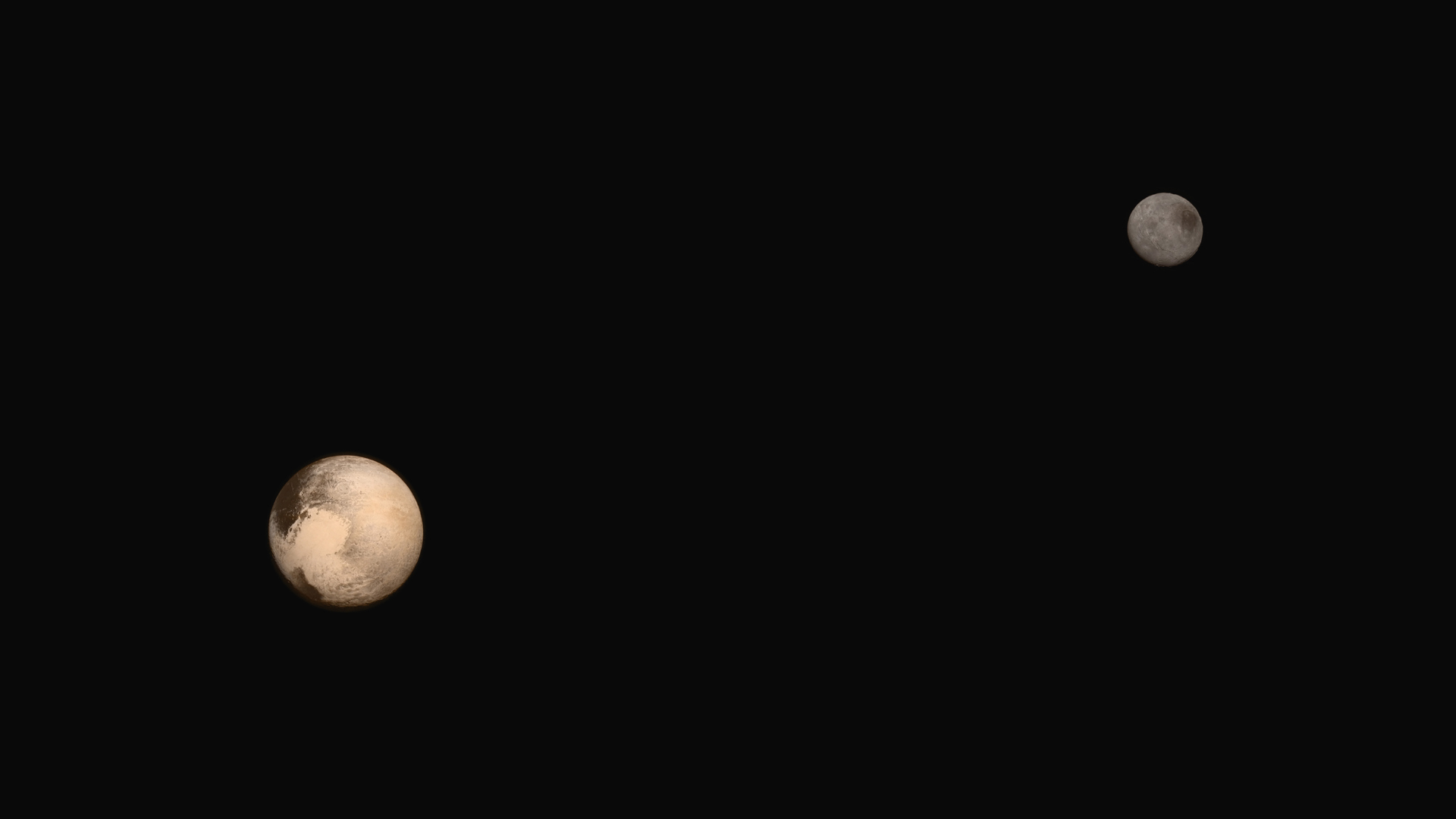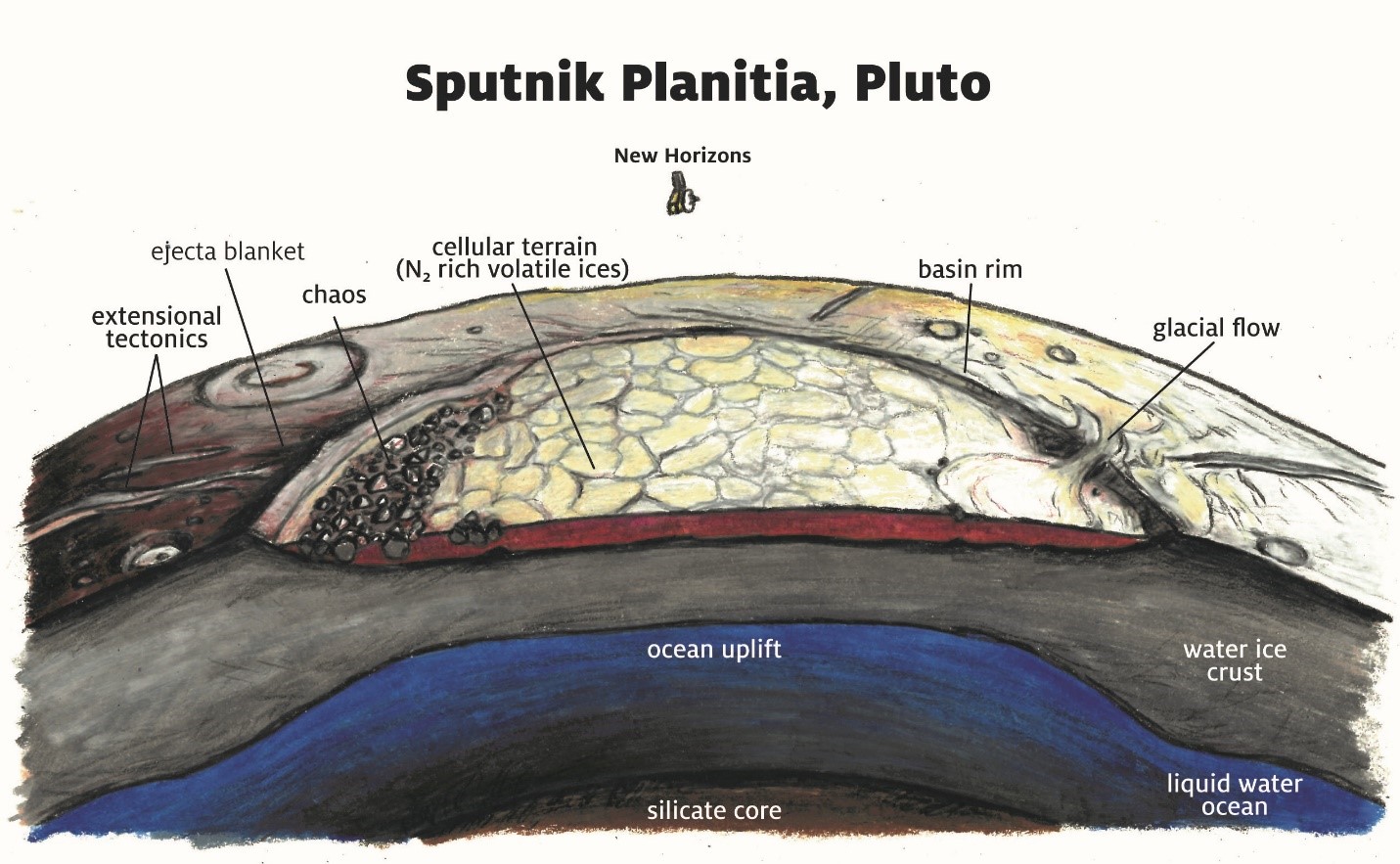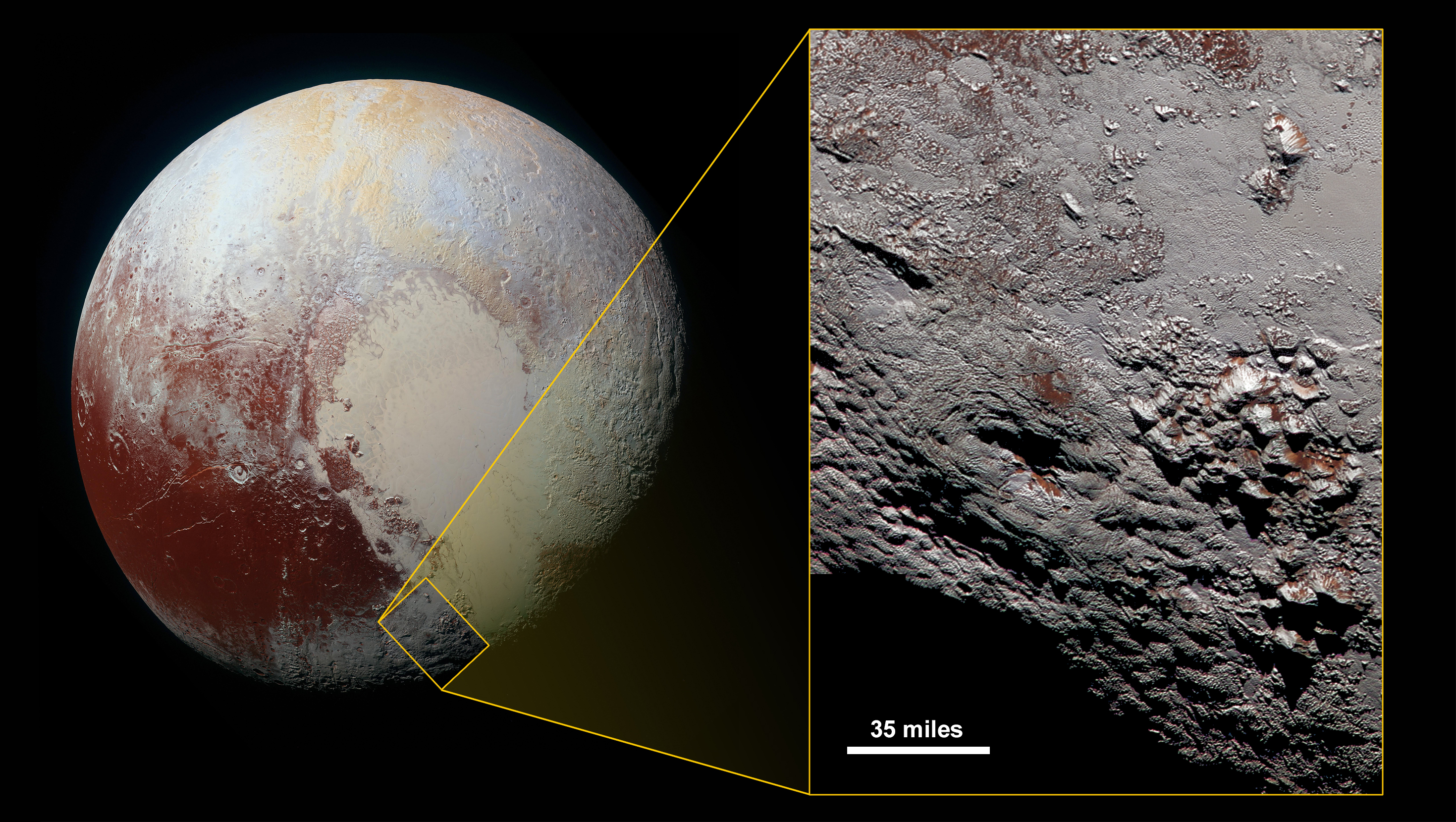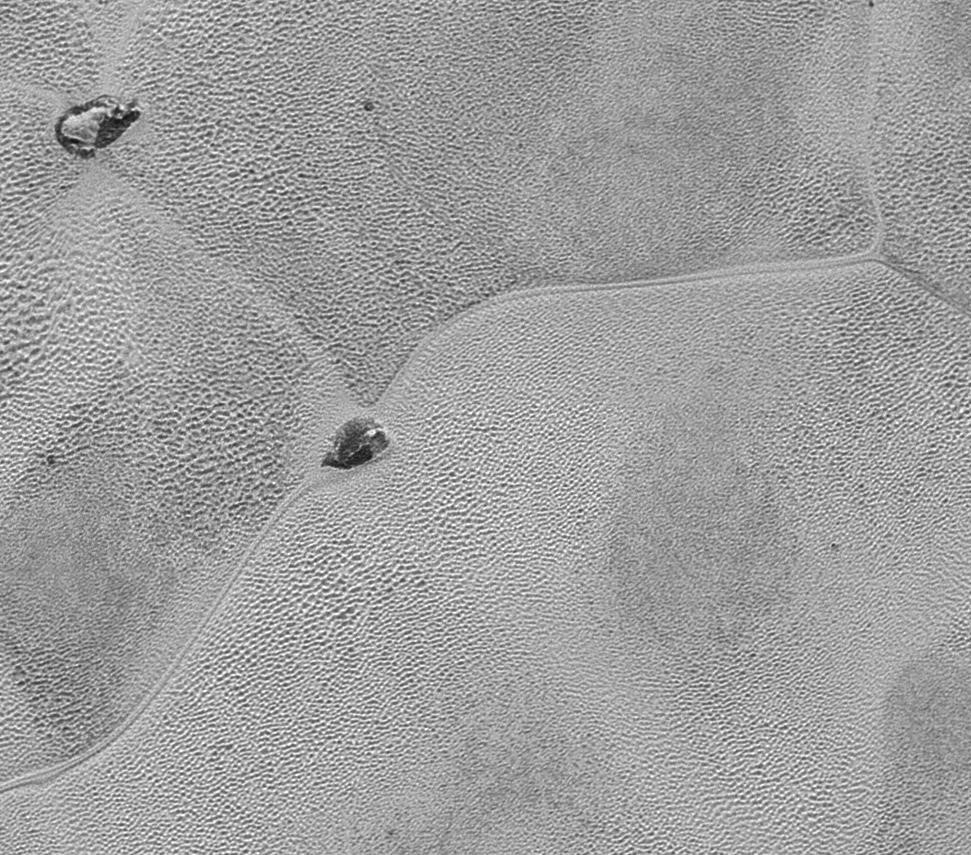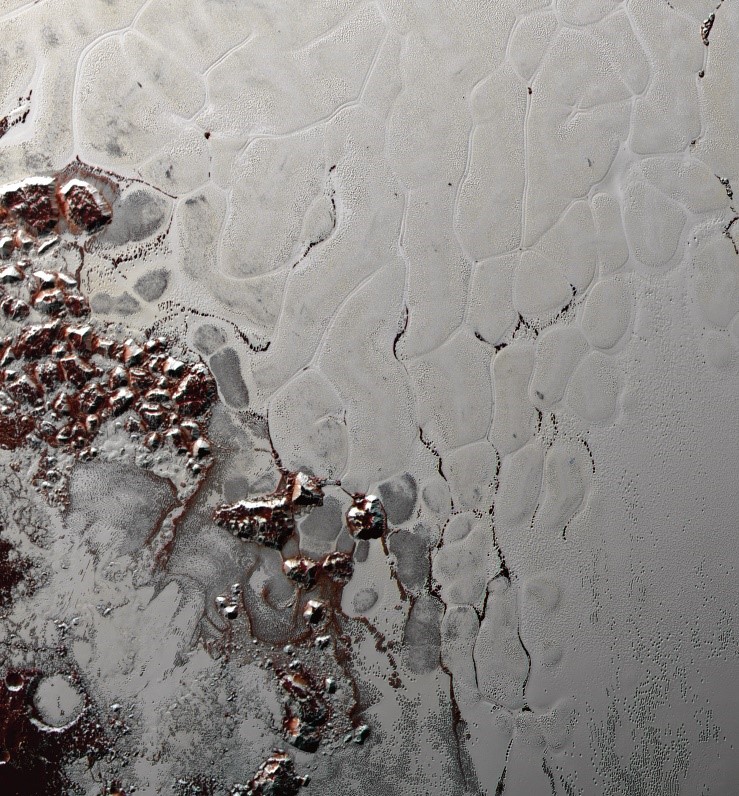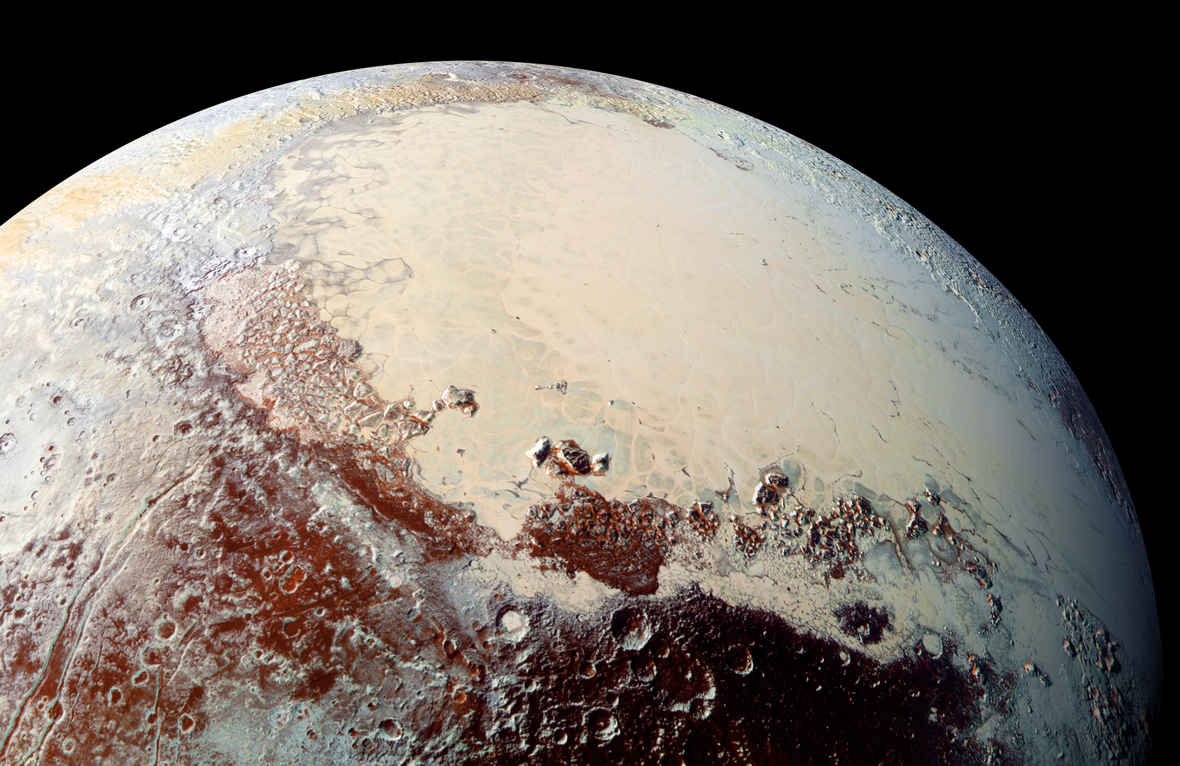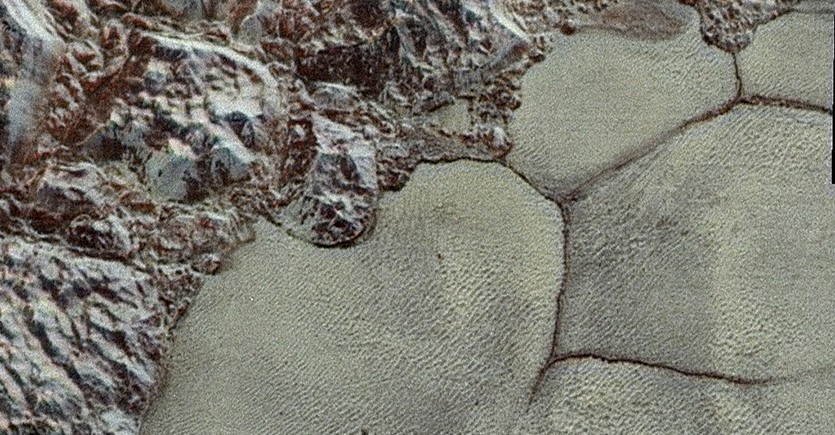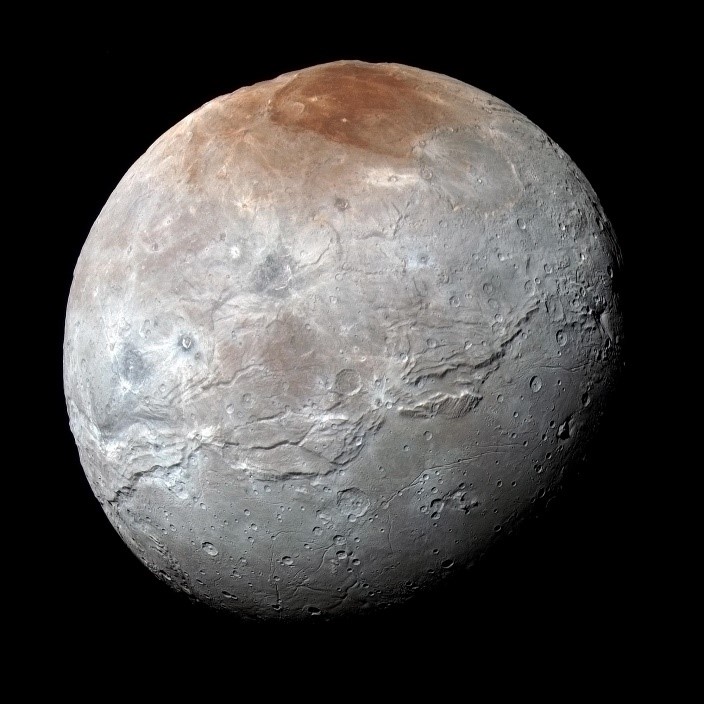Feature Story
Five Years After the Flyby, 10 Cool Things We Know About Pluto
Far from an inert ball of ice, Pluto has turned out to be one of the most geologically active and exciting places in the solar system.
Five years ago today, NASA’s New Horizons spacecraft — designed, built and operated by the Johns Hopkins Applied Physics Laboratory (APL) in Laurel, Maryland — made history. After a voyage of nearly 10 years and more than 3 billion miles, the intrepid piano-sized probe flew within 7,800 miles of Pluto. For the first time ever, we saw the surface of this distant world in spectacular, colored detail.
The encounter — which also included a detailed look at the largest of Pluto’s five moons, Charon — capped the initial reconnaissance of the planets started by NASA’s Mariner 2 mission more than 50 years before. It revealed an icy world replete in magnificent landscapes and geology — towering mountains, giant ice sheets, pits, scarps, valleys and terrains seen nowhere else in the solar system.
And that was only the beginning.
“New Horizons transformed Pluto from a fuzzy, telescopic dot into a living world with stunning diversity and surprising complexity,” said Hal Weaver, New Horizons project scientist at APL. “The Pluto encounter was exploration at its finest, a real tribute to the vision and persistence of the New Horizons team.”
In the five years since that groundbreaking flyby, nearly every conjecture about Pluto possibly being an inert ball of ice has been thrown out the window or flipped on its head.
“It’s clear to me that the solar system saved the best for last!” said Alan Stern, New Horizons principal investigator from the Southwest Research Institute, Boulder, Colorado. “We could not have explored a more fascinating or scientifically important planet at the edge of our solar system. The New Horizons team worked for 15 years to plan and execute this flyby and Pluto paid us back in spades!”
Scientists now know that, despite it being literally out in the cold, Pluto is an exciting, active and scientifically valuable world. Incredibly, it even holds some of the keys to better understand the other small planets in the far reaches of our solar system.
Here are 10 of the coolest, weirdest and most unexpected findings about the Pluto system that scientists have learned since 2015, thanks to data from New Horizons.

